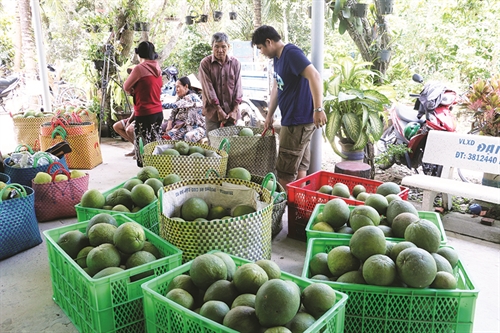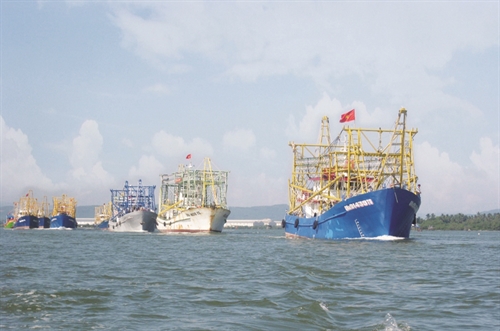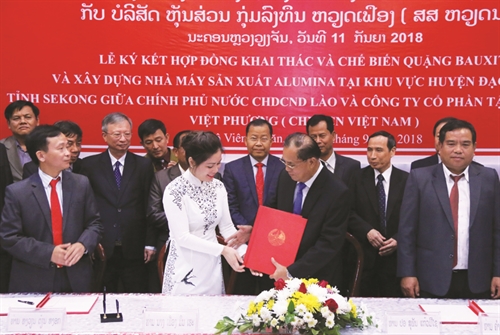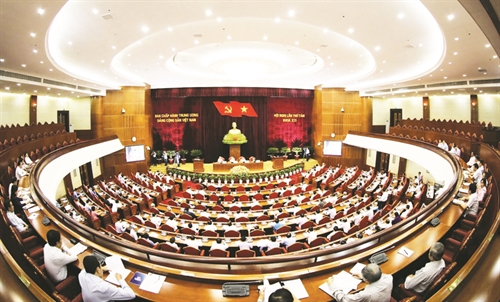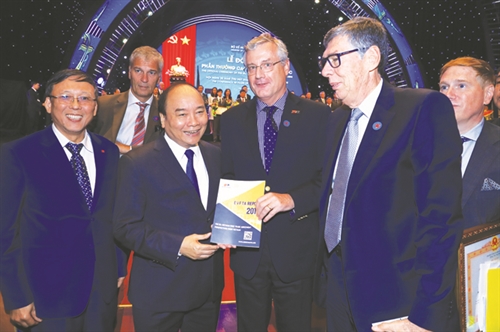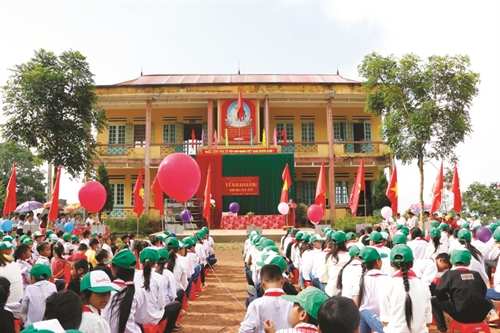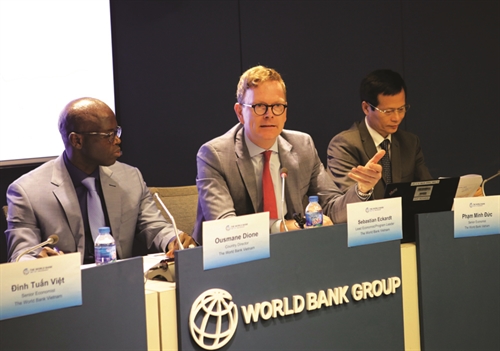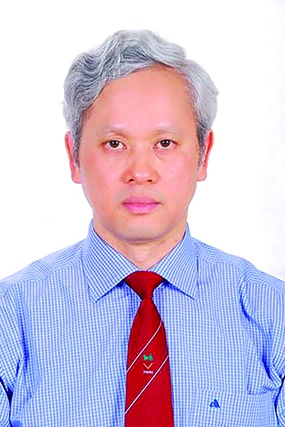 |
On January 15, Party General Secretary and President Nguyen Phu Trong signed Resolution 39-NQ/TW to enhance the efficiency of management, exploitation and use of the economy’s resources. In an exclusive interview granted to the Vietnam News Agency, Director General of the General Statistics Office of Vietnam (GSO) Nguyen Bich Lam talks about what the country needs to do to optimize its resources for promoting national development.
As the head of the agency drafting Resolution 39, can you outline its major points?
In furtherance of Party and State leader Nguyen Phu Trong’s conclusion under which the Government’s Party Caucus Commission is assigned to direct the inventory and assessment of current resources of the economy, the Prime Minister has formed a working group to direct the performance of this task, with Deputy Prime Minister Vuong Dinh Hue being the leader and the GSO acting as the permanent body in charge of drafting the Resolution.
Resolution 39 articulates the achievements, limitations and weaknesses in the management, exploitation, mobilization, distribution and use of the economy’s resources over the past time.
The Resolution reiterates the Party’s directing viewpoints on the management, exploitation and utilization of all available resources, requiring diversification of forms for mobilization and use of resources; promotion of the attraction of non-state investment resources; and application of market principles to the management, exploitation and use of resources for development.
The document also points to the need to promote the economization of material resources; tap to the utmost scientific and technological potential for socio-economic development; and promote the efficiency of management and control of the exploitation, mobilization, distribution and use of resources in order to avoid loss, waste and exhaustion of national resources and destruction of the environment.
Under the Resolution, general objectives and specific targets are set forth for human resources, material resources and financial resources from now till 2025, 2035, and 2045 when Vietnam will mark its centenary founding anniversary. The document also points out general and specific tasks and solutions for each type of resources to realize the set targets.
 |
| Director General of the General Statistics Office of Vietnam (GSO) Nguyen Bich Lam__Photo: Trong Dat/VNA |
It is said that problems have been seen in the management, exploitation and use of the country’s resources over the past time, not to mention their irrational and inefficient distribution and use. How does Resolution 39 address these problems?
To enhance the efficiency of management, exploitation and utilization of the economy’s resources, Resolution 39 sets targets for each type of resources with specified time points.
As for human resources, the percentage of workers in agriculture, forestry and fisheries is expected to drop to below 33 percent, 25 percent, and 15 percent of the country’s total workforce by 2025, 2035 and 2045, respectively. Also, in the next six years, the country will be among top countries in terms of human development index. By 2045, it is hoped that Vietnam’s labor productivity and competitiveness will climb to the average level of ASEAN-4 countries.
With respect to material resources, from now to 2025, it is aimed to improve laws, mechanisms and policies promoting the management and economical and efficient use of natural resources. By 2035, around 99 percent of natural land areas will be put into use and a quarter of degraded natural ecosystem areas will be recovered.
It is also expected that by 2045, the country can proactively prevent or mitigate the natural resource degradation and environmental pollution, respond to climate change and sea level rise, and conserve and sustainably use natural resources.
Regarding physical foundations and socio-economic infrastructure facilities, in the next six years, the Resolution sets the target to complete all urgent and key construction works so as to create a driving force for socio-economic development, and upgrade infrastructure facilities linking regions across the country and urban infrastructure facilities to form a complete and modern infrastructure system by 2045 on par with those of developed countries.
As for financial resources, the Resolution sets the goals of maintaining national security and ensuring state budget balance. Specifically, the state budget deficit will drop to below 4 percent of GDP by 2020 and 3 percent by 2030. Meanwhile, the national reserves will account for 0.8-1 percent, 1.5 percent, and 2 percent, of GDP by 2025, 2035 and 2045, respectively.
It is also expected that by 2030, public debts will not exceed 60 percent, while government debts will not surpass 50 percent, and foreign debts will not be over 45 percent of GDP.
What major solutions are suggested in Resolution 39 to ensure state budget balance and gradually reduce state budget deficit?
To reach the above goals, the Resolution lays out several major solutions, including the strict implementation of the Law on the State Budget, enhancement of financial-state budget disciplines in all sectors and at all levels, and maintenance of state budget revenues, ensuring correct, sufficient and prompt collection of these revenues and avoiding revenue loss, transfer pricing and tax owing.
At the same time, state budget expenditures should be strictly supervised to meet the requirements on thrift practice and waste combat, and increase non-business revenues. It is also necessary to implement the tight fiscal policy in combination with the monetary policy and cut off extra-budget financial funds to concentrate resources for development.
Other solutions include controlling and managing public debts to keep them within the allowable limits, stepping up the restructuring of public debts and strictly controlling implicit debt obligations, and improving regulations on public debt management to suit reality and international practices.
The Resolution also asks for better use of public debts, binding the responsibility of loan distribution and use to accountability and responsibility to balance debt payment obligations. Meanwhile, efforts should be focused on developing the domestic capital market through diversifying debt instruments and investors, especially foreign investors.
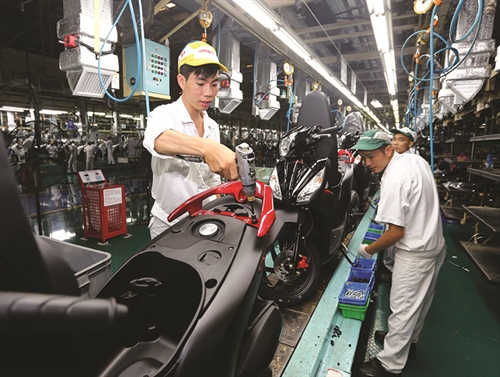 |
| Motorbike assembly line of Japan-invested Honda Vietnam Co. Ltd. in Vinh Phuc province__Photo: Danh Lam/VNA |
Could you suggest some solutions to effectively bring into play human, material and financial resources referred to in Resolution 39 in the coming time?
In order to raise the use efficiency of resources for boosting rapid and sustainable socio-economic development, the country should take comprehensive solutions, such as further improving relevant laws, mechanisms and policies.
At the same time, Vietnam should speed up the process of shifting the growth model from exploitation of natural resources, investment capital and labor to combined and efficient use of the economy’s resources, particularly high-quality human resources.
Solutions for improving labor productivity, quality, efficiency, competitiveness and sustainable development of the economy should also be taken in a coordinated manner. It is necessary to restructure the economy, sectors, regions and key products toward modernization, promotion of comparative advantages and broader participation in global value chains.
Different resources should be reserved to develop products with comparative advantages, high competitiveness and added value, and outlets.
The country should proactively seize opportunities and take full advantage of achievements of the Fourth Industrial Revolution; step up the application of information technology and share of information on resources in the economy for their optimal and effective use; effectively distribute, share and reuse redundant resources, and increase the value of the economy’s resources.
Last but not least, ministries, sectors and localities should urgently concretize targets, tasks and solutions mentioned in the Resolution; and formulate and carry out plans so as to effectively manage, exploit, distribute and use the country’s resources.-
Targets set forth in Resolution 39:
- By 2025
+ To reduce the percentage of workers in agriculture, forestry and fisheries to below 33 percent of the country’s total workforce.
+ To basically redress human resources supply-demand imbalance, establish a job-based system and consolidate the career-based system.
- By 2035
+ To reduce the percentage of workers in agriculture, forestry and fisheries to below 25 percent of the country’s total workforce.
+ To increase the Human Development Index (HDI) to 0.7-0.799.
+ To develop the innovative capacity, and build the contingent of scientific and technological personnel and leading experts with qualifications equal to those of advanced countries in the region.
- By 2045
+ To reduce the percentage of workers in agriculture, forestry and fisheries to below 15 percent of the country’s total workforce. To increase HDI to 0.8 or higher.
+ To make the labor productivity and competitiveness of Vietnamese human resources equal to the average level of ASEAN-4 countries.
* Regarding material resources
- By 2025
+ To improve the laws, mechanisms, policies and instruments promoting the management and economical and efficient use of natural resources.
+ To build a complete and modern system of physical foundations and socio-economic infrastructure facilities.
- By 2035
+ To develop instruments for regulating the market for land use rights, ensuring that around 99 percent of natural land areas will be put into use and a quarter of degraded natural ecosystem areas will be recovered.
+ To ensure a complete and modern system of physical foundations and socio-economic infrastructure facilities for convenient and rapid connections inside and outside the country.
- By 2045
+ To proactively prevent and mitigate the degradation of natural resources and environmental pollution; respond to climate and sea level rise; and conserve and sustainably use natural resources.
+ To improve the complete and modern system of physical foundations and infrastructure facilities up to those of developed countries.
* Regarding financial resources
- By 2025
+ To ensure national financial security, reduce the state budget deficit to below 4 percent of GDP by 2020, and 3 percent of GDP by 2030, toward balancing state budget revenues and expenditures. By 2030, to keep public debts not exceeding 60 percent of GDP, government debts not surpassing 50 percent of GDP and the country’s foreign debts not exceeding 45 percent of GDP.
+ By 2020, to basically complete and by 2030 to complete the reorganization and settlement of state-owned houses and land nationwide; to completely relocate polluting facilities and facilities subject to relocation under plans.
+ National reserves will account for 0.8-1 percent of GDP, and capital of the bond market will account for 55 percent of GDP.
- By 2035
+ National reserves will account for 1.5 percent of GDP, and capital of the bond market will be equivalent to 70 percent of GDP. Capital mobilized from insurance businesses will account for 20-30 percent of the total long-term investment capital.
+ State budget revenues from land and public assets will account for 10 and 5-7 percent, respectively, of the total state budget revenues.
- By 2045
+ National reserves will account for 2 percent of GDP, and capital of the bond market will be equivalent to 80 percent of GDP. Capital mobilized from insurance businesses will account for 30-50 percent of the total long-term investment capital.
+ State budget revenues from land will be kept at 10 percent and 5-7 percent from public assets, respectively, of the total state budget revenues.-
